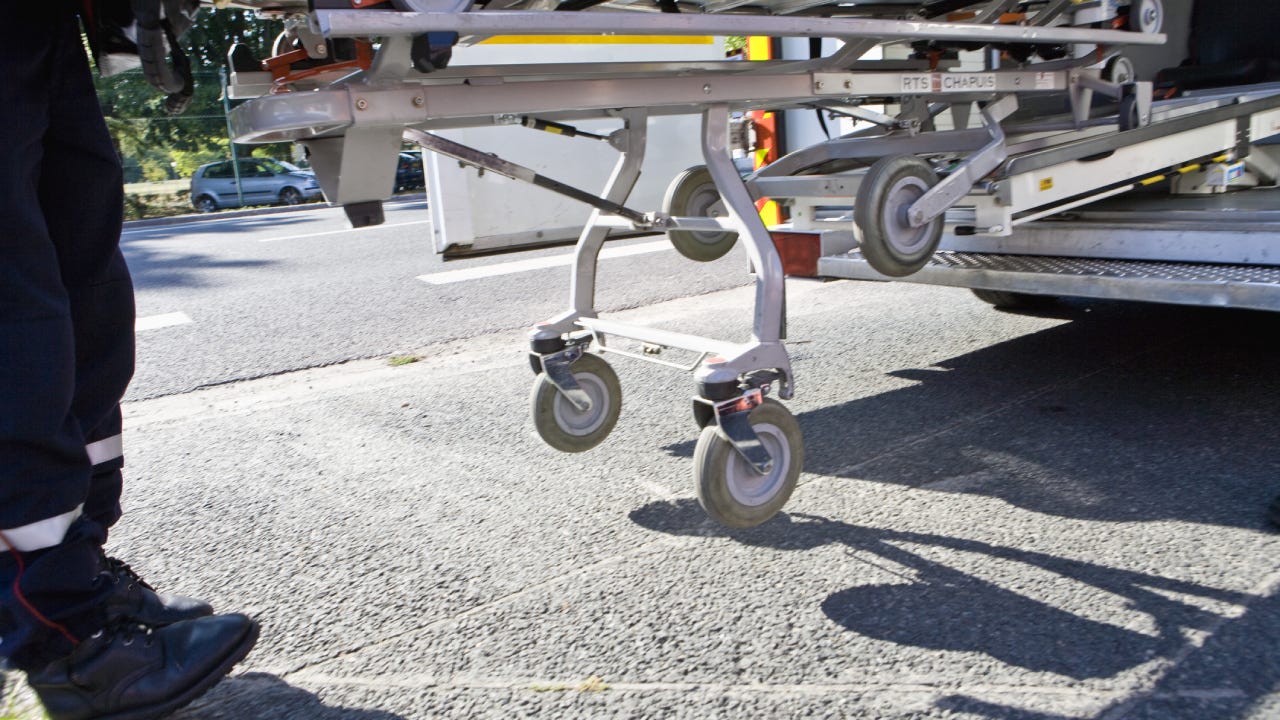Does car insurance cover ambulance rides?

The Bankrate promise
At Bankrate, we strive to help you make smarter financial decisions. To help readers understand how insurance affects their finances, we have licensed insurance professionals on staff who have spent a combined 47 years in the auto, home and life insurance industries. While we adhere to strict , this post may contain references to products from our partners. Here's an explanation of . Our content is backed by Coverage.com, LLC, a licensed entity (NPN: 19966249). For more information, please see our .
Most adults have to get behind the wheel at some point, whether it’s to commute to and from work or to drive cross-country on a road trip. But while driving is a common task most adults are required to do, it can still be risky to get behind the wheel of a vehicle. There are roughly 6 million car accidents on roads in the U.S. each year, and while most drivers do their best to drive defensively, it’s not always possible to avoid getting into an accident. And if you’re involved in a car accident, the damages to your vehicle can be costly and expensive.
But vehicle damage isn’t the only type of issue that can result from a car accident. There may also be injuries, and in some cases, they could require immediate medical attention. What that means is that if you’re hurt in a car accident, you may end up in the back of an ambulance that is heading to the hospital. While the cost may not be top of mind at that point, you will at some point need to know whether the ambulance ride will cost you money out of pocket. So does your car insurance company pay for an ambulance ride, or do you? The answer is: it depends.
When does car insurance cover ambulance rides?
As long as you have medical payments coverage or personal injury protection as part of your car insurance policy, your insurer will typically cover the cost of going to the hospital in an ambulance after you’re involved in a car accident regardless of fault. If you do not have this type of coverage and weren’t at fault, the at-fault driver’s bodily injury coverage should pick up the tab for the cost of the ambulance ride.
What car insurance coverage covers ambulance rides?
While every insurance company has its own limits on how much of your medical bills it will pay, the best car insurance companies offer several financial protections that may cover ambulance rides. Every policy includes different categories of coverage, some of which will be mandatory in your state and some that may be optional. Here are the types that may pay your ambulance company for medical expenses:
- At-fault driver’s bodily injury liability: If another driver is at fault in the accident, their bodily injury liability coverage should pay for your ambulance ride. This is mandatory coverage in most states.
- Personal injury protection (PIP): Some states, called no-fault states, require you to carry PIP. If you live in one of these states, it is a mandatory part of your policy and could pay for your ambulance costs.
- Medical payments coverage: Medical payments coverage is optional coverage in many states (and required in a few), but this coverage can be a great way to pay for an ambulance ride if you have it on your policy. It may also cover your ambulance costs if you are in an accident when riding a bike, walking or are a passenger in someone else’s car.
- Uninsured and underinsured motorist coverage (UM/UIM): About one in eight drivers is estimated to be on the road illegally without insurance. You may need UM/UIM coverage to protect you in case you are involved in an accident with an uninsured or underinsured driver. This type of insurance kicks in when the other driver is at fault, but uninsured, and could help pay for some of your medical care, including the ambulance ride.
How much do ambulance rides cost?
Ambulance costs vary greatly depending on a number of considerations such as where you live, whether the ambulance company is for-profit or nonprofit and the type of care you receive. There may be a base charge along with a per-mile surcharge, so your distance from the closest hospital may also play a role.
A recent study published in Health Affairs found that the median ambulance bill in the U.S. was $450. If an air ambulance is required, the median cost skyrockets to $21,698. In many urban areas, the costs are higher than they are in rural areas. If you live in Washington, D.C., for example, you may have to pay $1,000 for an ambulance ride, along with a mileage fee as of 2022.
Alternatives to paying for ambulance rides with car insurance
If your auto insurance doesn’t cover the cost of medical attention you received during an ambulance ride, you may have other options. In many cases, a combination of car insurance and health insurance will pay for the costs you incur during an accident.
Health insurance
Your health insurance policy may cover ambulance costs in some cases, but it depends on how your health insurance interacts with your car insurance. In some states, the car insurance policy pays first, and in others, the health insurance policy pays first. In general, there are a number of factors that dictate which type of policy is responsible for picking up the tab for the costs of the ambulance used after a car accident.
Accident insurance
If you have accident insurance, usually purchased through your employer, it may be used in many cases to pay for ambulance rides. Not everyone has this type of policy. It is considered supplementary to your health insurance rather than a replacement for it. Accident insurance is designed to help pay for costs that are not picked up by health insurance.
Accident insurance won’t be the first place to look for reimbursement of ambulance costs, however. Accident insurance, like health insurance, may include a deductible or copay that you’ll need to pay out of pocket. This may also be true of your car insurance, but a quick call to your agent and a review of your health and accident paperwork can help you see which option will save you the most money.
Frequently asked questions
-
-
What the Affordable Care Act (ACA) covers varies from state to state and plan to plan, so you should review your policy carefully to see what is covered and to what extent.
-
Non-emergency medical transportation may be available depending on where you live and the services that your state or county offers. Those with Medicaid may be eligible for rides that are medical in nature, such as a doctor’s visit, if they do not have a driver’s license or have a disability.
-
Without health or car insurance, you might be footing the bill for your ambulance ride by yourself. It’s hard to put an exact number to how much you’ll pay, since there are multiple factors to consider, but the median amount in the U.S. was $450 for ground transportation.
-
Related Articles

Moving truck insurance: Does car insurance cover a moving truck rental?


